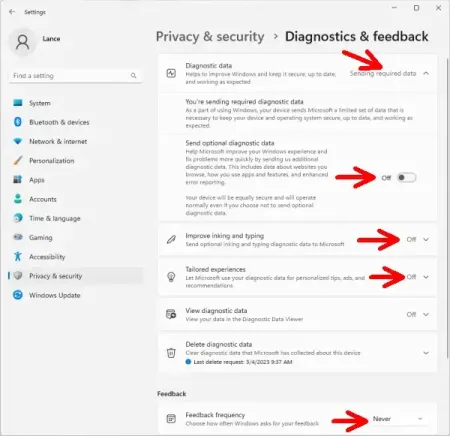Windows telemetry is a feature in Microsoft's Windows operating system that collects and sends data about the way a computer is used back to Microsoft. This data includes information about software and hardware configuration, performance metrics, and usage statistics.
Telemetry data can be used by Microsoft to improve Windows, identify and fix bugs, and provide security updates. It can also be used to help Microsoft understand how people use Windows, which can inform the development of new features and services.
While telemetry is designed to be helpful, some people have raised concerns about the privacy implications of this data collection. Microsoft has implemented controls to allow users to adjust the level of telemetry data that is collected, but some users still prefer to disable it altogether.
How do I Disable Telemetry on Windows 11?
In Windows 11, you can disable telemetry using the following steps:
- Press the Windows + I keys on your keyboard.
- Click on Privacy & security from the left-hand menu.
- Scroll down to the Diagnostics & feedback section.
- Under the Diagnostic data heading, select Required diagnostic data to send only the minimum amount of data necessary to keep Windows running smoothly.
- Toggle off the Send optional diagnostic data, Improve inking and typing and Tailored experiences options to stop sending data related to handwriting recognition and personalized recommendations to Microsoft.
- Finally, under Feedback frequency, select Never to disable the collection of feedback data altogether.

And that's How to Disable Telemetry for Windows 11 (the same process should work for Windows 10 too). Note that some telemetry data may still be collected and sent to Microsoft even after disabling these options. Disabling telemetry on Windows may also prevent some features and updates from functioning properly, so proceed with caution and consider the potential trade-offs before making any changes.